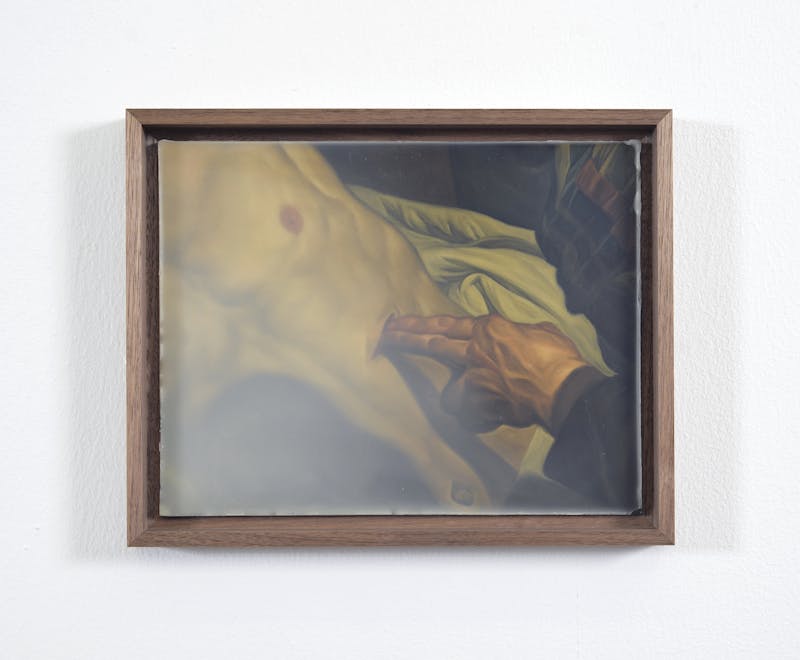‘A lump of clay on the sculptor’s bench. A réique existence—undeniable, total, accomplished. But nothing yet exists of the aesthetic being, which has still to bloom. Each application of the hands and thumbs, each action of the chisel accomplishes the work. Do not look at the chisel, look at the statue. With each new action of the demiurge, the statue gradually emerges from its limbo. It moves toward existence—toward an existence, which in the end will burst forth in an intense and accomplished, actual presence.’ – Étienne Souriau, The Different Modes of Existence
Much like Souriau’s description of a sculptor kneading clay into existence, Niklas Asker depicts forms with a similarly unrestrained hand. He uses his brushes with the dexterity of thumbs daubing at clay, rendering busts of statues or stone carvings into amorphous relics of his own. These small compositions, which he dubs as ‘excavations’, are acutely detailed with shadows and stone-like surfaces. Asker's process is, on closer viewing, perhaps less akin to a sculptor and more like that of an archaeologist, digging and dusting off centuries of art that came before, as his paintings gradually emerge from Souriau’s 'limbo'.
His interest in painting sculpted relics is inspired by a trip he made to Paris in 2016. Having previously spent ten years as an illustrator of comics, Asker’s absorption into painting was prompted by seeing sculptor Rodin’s maquettes at the Musée d’Orsay, namely his miniature studies of converging bodies in plaster and clay. This abstraction evident in Rodin’s forms, merged with Asker’s intuition as a comic book raconteur, has continued to sharpen his focus ever since. Almost always painted in the same washed out muddy greens and umbers, their initial downcast allure quickly morphs into one of vibrance, as if a torch looms from beyond the frame, casting a spotlight onto the subjects. Whether it’s a painted portrait, or a statue from antiquity, Asker’s mark-making attends to the tiniest details on the surface. William Blake wrote of ‘paying attention to the minute particulars’ in our world, which, in Asker’s case prevails through many deft, hardly decipherable lines to render phantom shadows or wrinkles of skin.

Niklas Asker, Second Skin (after Caravaggio), 2021
His appreciation for pre-eminent art from the past means he’s constantly reinventing what the masters left in their wake – Goya, Velazquez, Manet are among his favourites. Similarly to Souriau’s nod to the lump of clay on a sculptor’s bench, Asker is fixated by the many mutations and adjustments an artwork takes before it is deemed complete. He strives to, in his words, ‘take away the notion of certainty’, which is why particular paintings of his allude to being unfinished, or are nebulous in form. The unrelenting palette, too, means each can be viewed as similarly stiffened sights from the same view, akin to how every one of JMW Turner’s paintings inhabit a seemingly golden light born of his lifelong fascination with yellow.
Breaking free of their moulds, Asker’s paintings suspend his modified reliefs into indelible paint. In the ascending light, revealing as it does every fissure and fracture of their restoration, a higher power seems to await.